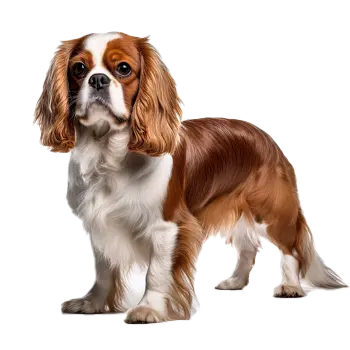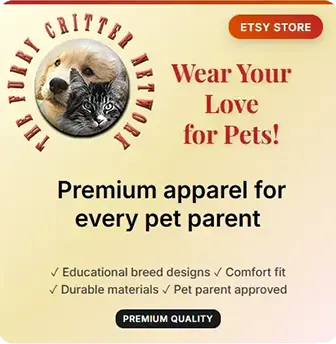Training a Cavalier King Charles Spaniel presents relatively few challenges compared to many breeds, as these spaniels possess natural eagerness to please, good intelligence, and responsive temperaments that facilitate learning. However, successful training requires understanding the breed's sensitive nature and adapting methods to suit their personality, as Cavaliers respond enthusiastically to positive reinforcement while shutting down or becoming anxious under harsh corrections or punitive approaches. The key to effective Cavalier training lies in patience, consistency, and making training enjoyable through games, treats, praise, and play rewards that motivate these food-driven, people-oriented dogs.
Early socialization forms the foundation of well-adjusted Cavalier behavior, though the breed's naturally friendly temperament means socialization presents fewer challenges than with wary or suspicious breeds. Puppies should be exposed to diverse people including children, men, women, people wearing hats or using mobility aids, and individuals of various ethnicities to ensure comfortable interactions with all humans. While most Cavaliers display inherent friendliness toward people, proper socialization prevents potential fearfulness and ensures confident behavior in various situations. Exposure to other dogs, different environments, household sounds, car travel, and basic grooming procedures during the critical socialization period between 8 and 16 weeks establishes the foundation for confident adult behavior.
Basic obedience training should begin immediately upon bringing a Cavalier puppy home, starting with simple behaviors including name recognition, coming when called, sitting, and accepting gentle handling. Cavaliers typically learn these fundamental skills quickly when training sessions are kept brief, positive, and rewarding. Using high-value treats, enthusiastic praise, and play rewards motivates these food-driven dogs, while training sessions lasting 5 to 10 minutes prevent boredom and maintain engagement. Multiple short training sessions throughout the day prove more effective than single long sessions, as Cavaliers learn best through frequent, positive repetitions rather than extended drilling.
House training represents one area where Cavaliers may progress more slowly than some breeds, as small dogs in general can be more challenging to house train than larger breeds. The key to successful house training lies in establishing consistent routines, taking the puppy outside frequently (after meals, after naps, after play sessions, and every hour or two during the day), and providing enthusiastic praise and rewards for outdoor elimination. Crate training facilitates house training by utilizing the dog's natural reluctance to soil their sleeping area, though crates should be appropriately sized and never used punitively. Accidents should be cleaned thoroughly with enzymatic cleaners rather than punished, as Cavaliers' sensitive nature means harsh reactions to accidents create anxiety that impedes training progress. Most Cavaliers achieve reliable house training by 6 to 12 months with consistent positive reinforcement, though some individuals may take longer.
Leash training typically proceeds smoothly with Cavaliers, as their moderate size and cooperative temperament make them manageable walking companions. Puppies should be introduced to collar or harness and leash gradually, allowing them to adjust to the sensation before expecting polite walking. Teaching loose-leash walking through reward-based methods—stopping when the dog pulls and moving forward when the leash loosens—usually produces good results within weeks. However, Cavaliers possess spaniel instincts to investigate scents and follow interesting smells, which can lead to pulling or distraction during walks. Using high-value treats to maintain attention and teaching a reliable "leave it" command helps manage these spaniel tendencies.
Recall training deserves particular emphasis with Cavaliers due to their friendly nature and tendency to approach strangers or other dogs, potentially putting them at risk if off-leash in unsecured areas. While most Cavaliers learn to come when called in low-distraction environments, their responsiveness may decrease dramatically when interesting people, dogs, or scents capture their attention. Training recall through games, high-value rewards, and gradually increasing distractions builds reliability, though even well-trained Cavaliers should remain on leash or within secured areas, as their spaniel instincts and friendly nature may override training when compelling distractions appear.
Advanced training beyond basic obedience suits many Cavaliers well, as these intelligent, biddable dogs enjoy learning and participating in activities with their owners. Trick training, nose work, rally obedience, and therapy dog preparation all appeal to Cavaliers' desire to please and their natural aptitude for learning. The breed has achieved success in various dog sports including agility, though their moderate athleticism means they compete more for enjoyment than for top placements. Therapy dog work represents a particularly suitable activity for Cavaliers, as their gentle temperament, appropriate size for lap visits, and intuitive response to human emotions make them outstanding comfort animals in hospitals, nursing homes, schools, and other therapeutic settings.
Exercise requirements for the Cavalier King Charles Spaniel fall into the moderate range, requiring daily activity but adapting readily to their family's lifestyle. Most adult Cavaliers thrive on 30 to 60 minutes of daily exercise divided into multiple sessions, typically including morning and evening walks supplemented by play sessions and brief outdoor bathroom breaks. The breed's spaniel heritage means they genuinely enjoy walks that offer opportunities to investigate scents and explore their environment, making varied walking routes more engaging than repetitive paths. However, Cavaliers lack the stamina of larger sporting spaniels, being content with moderate walks rather than requiring marathon exercise sessions.
Play sessions provide valuable exercise while strengthening the human-dog bond and channeling the Cavalier's natural retrieving instincts inherited from spaniel ancestors. Many Cavaliers enjoy fetch games, though their retrieval drive varies among individuals, with some dropping toys at their owner's feet repeatedly while others prefer keep-away games. Indoor play becomes important during extreme weather, as Cavaliers tolerate heat and cold poorly. Short training sessions, hide-and-seek games, puzzle toys, and gentle tug games provide mental and physical stimulation when outdoor exercise is limited.
The breed's exercise needs must be balanced against their physical limitations and health considerations. Cavaliers should avoid strenuous exercise during extreme heat, as their relatively short muzzles make them prone to overheating. Puppies require limited exercise to protect developing joints, with the rule of thumb being five minutes of exercise per month of age twice daily until skeletal maturity around 12 to 18 months. Adult Cavaliers with heart conditions may require exercise modifications based on veterinary guidance, as cardiac disease is common in the breed. Owners must monitor their dogs during exercise for signs of fatigue, excessive panting, or reluctance to continue, adjusting activity levels accordingly.
Mental stimulation proves as important as physical exercise for maintaining a well-adjusted Cavalier King Charles Spaniel. These intelligent dogs require regular cognitive engagement to prevent boredom and associated behavioral problems. Interactive puzzle toys that dispense treats, scent work games, short training sessions, and novel experiences all provide valuable mental enrichment. Rotating toys prevents boredom, while introducing new activities and environments challenges the dog cognitively. Many Cavaliers enjoy learning tricks and commands well beyond basic obedience, finding satisfaction in mastering new skills and receiving the praise and attention that accompanies successful learning.

